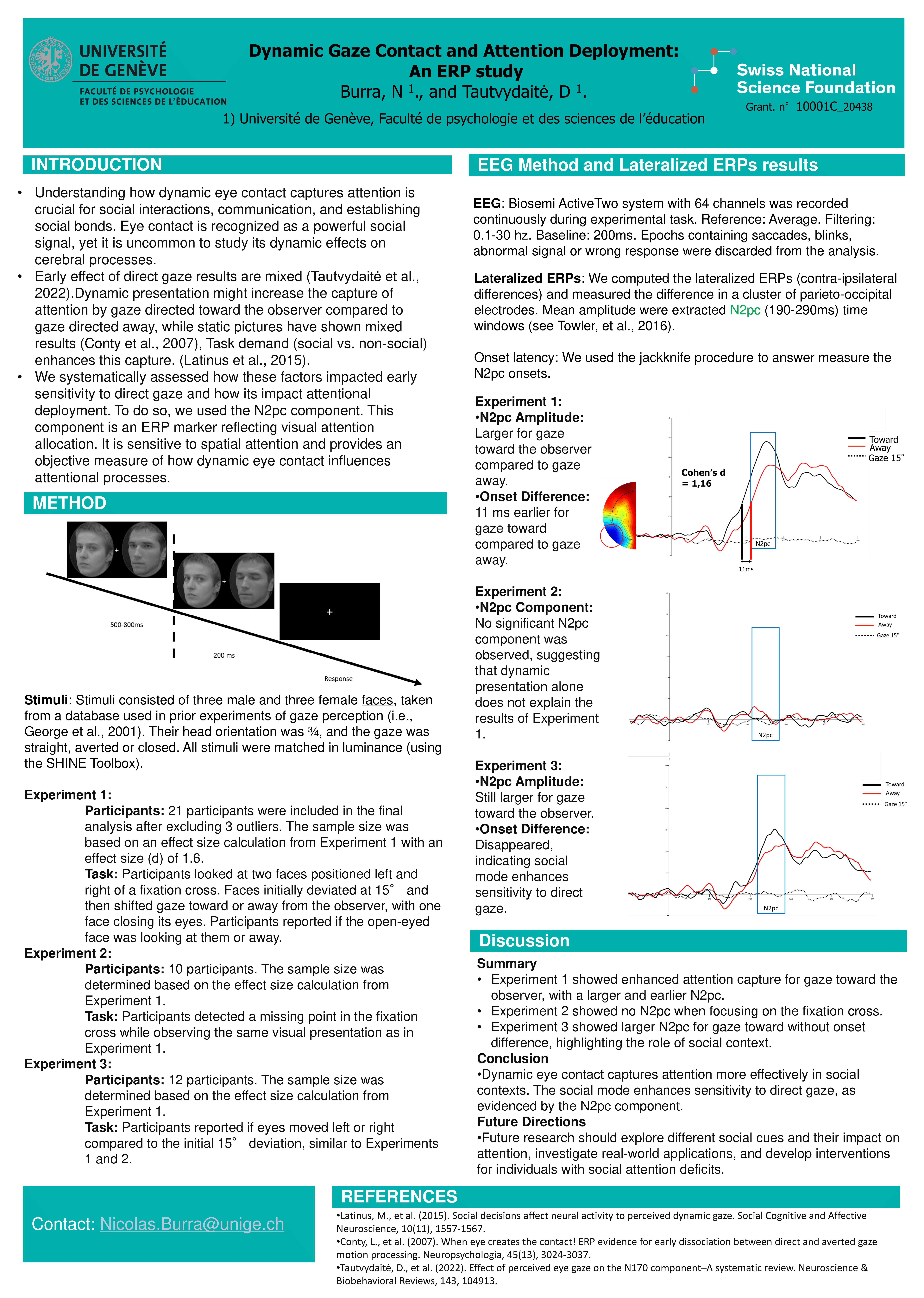The role of top-down mechanisms in gaze perception

Summary
Human beings, as a social species, have a heightened ability to detect and perceive visual features involved in social exchange, such as faces and eyes. In particular, eye gaze conveys information crucial for social interactions. Researchers have posited that in order to engage in dynamic face-to-face communication in real time, our brains need to process another person's gaze direction rapidly and automatically. Evidence indicates that direct gaze enhances face encoding and attentional capture and that direct gaze is perceived and processed more quickly than averted gaze. These findings are summarized as the “direct gaze effect”. However, in the recent literature, evidence suggests that the mode of visual information processing modulates the effect of direct gaze. In this proposal, I claim that top-down processing, and specifically the relevance of eye features in the task at hand, promotes early preferential processing of direct compared to indirect gaze. I propose that low relevance of eye features in the current task will prevent differences in treating eye direction between gaze direction because its encoding will be superficial. The differential treatment of direct and indirect gaze will only occur when the eyes are task relevant. To assess the implication of task relevance on the temporality of cognitive processing, we will measure event-related potentials (ERPs) in response to facial stimuli. In this project, instead of the typical ERP markers such as the P1, N170, or P300, we will measure lateralized components such as the lateralized N170 and the N2pc, which are markers of early face encoding and attentional deployment respectively. We hypothesize that the relevance of eye features in the task at hand is crucial in the direct gaze effect and propose to reexamine previous studies, which had cast doubt on the existence of the direct gaze effect. In Experiments 1-3, participants will be given different tasks (face detection, gender discrimination, or gaze direction discrimination) for the same static pictures. In Experiment 4, we will run all conditions of Experiment 1-3 in a unique long experiment. In Experiment 5, we will evaluate the role of task relevance of eye gaze in the emergence of the direct gaze effect, when attention is focused on the eye region. Finally, in Experiment 6, we will measure early face encoding and attentional processing to dynamic (i.e., moving) stimuli in order to assess the processing of direct gaze in a more usual situation. Overall, these studies contribute to the gaze processing literature both at empirical and theoretical levels by assessing systematically the role of top-down processing in the early perception of direct gaze.
Team
Funding
Swiss National Science Foundation - Project funding
204387 - "The role of top-down mechanisms in gaze perception"
01.12.2021 – 30.04.2024
Selected Scientific Outputs






